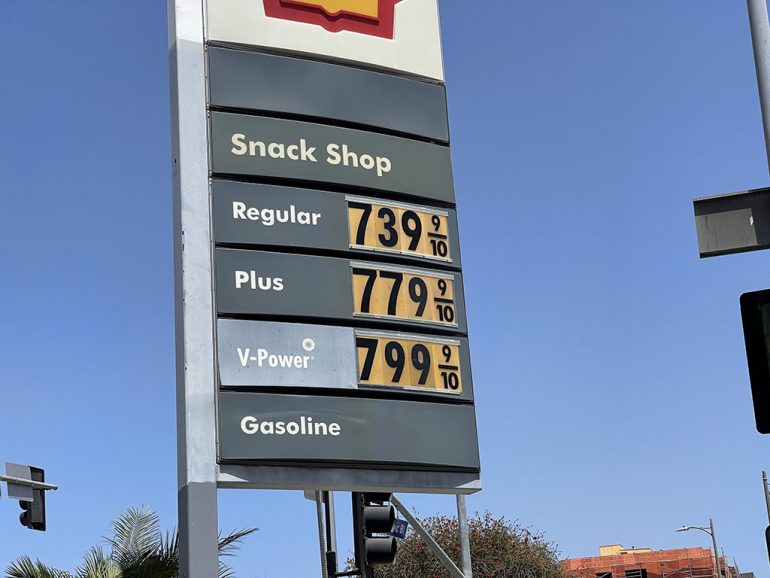
The recent surge in oil prices has left consumers and policymakers grappling with its multifaceted implications. As drivers face higher gasoline costs and industries like trucking and farming contend with elevated diesel prices, the repercussions extend far beyond the pump. Many consumers have looked closely at the current market and economic conditions but still wondered why oil and gas prices have gone up.
A pivotal factor in the surge of oil prices is Saudi Arabia’s strategic decision to curtail its oil production for global markets. Since July, the world’s second-largest oil supplier has significantly reduced its output by 1 million barrels per day, with plans to extend this cut until the end of the year. This maneuver, not limited to Saudi Arabia, was also mirrored by Russia, an ally in the OPEC+ oil producers’ coalition, which extended its own production cut through 2023. Consequently, the tightening supply has been a primary driver behind the rise in oil prices.
Also, don’t forget that you can get discounted new car pricing with a free quote through qualified local dealer partners.
To provide context, the international benchmark Brent oil, which traded at approximately $90 per barrel before the Saudi extension in early September, now hovers just below $94 per barrel. Similarly, U.S. oil prices have surged to around $90.50 per barrel from $68 prior to the Saudi production cut.
Analysts hold varying views on the peak oil prices could reach. While some anticipate oil surpassing the $100 per barrel mark due to robust demand and restricted supply, others are more cautious. Jorge Leon, Senior Vice President for Oil Markets at Rystad Energy, predicts average prices in the low $90s for the last quarter of the year, citing resilient demand for fuel. However, it’s essential to recognize that oil prices can be volatile, and a swift ascent to $100 might not translate into a sustained plateau.
Saudi Arabia’s unilateral approach to production cuts offers a degree of flexibility, as they can adjust their output based on market conditions. Excessive price hikes could potentially trigger central banks worldwide to increase interest rates or maintain higher rates, which could have negative consequences for global economic growth.
Demand for fuel plays a pivotal role in oil price dynamics. With the resurgence of travel post-pandemic, a robust U.S. economy is driving up oil demand and, consequently, prices. Conversely, sluggish economic growth in China and Europe can exert downward pressure on oil prices.
Financial speculation is another factor contributing to the current surge in oil prices. Investors are increasingly entering the oil market with bets on price increases, exacerbating the situation. Moreover, there is the possibility of more Iranian oil entering the market as the U.S. exercises leniency in enforcing sanctions, potentially adding 200,000 to 300,000 barrels per day.
The rise in oil prices directly affects consumers, resulting in higher prices for gasoline and diesel. In the United States, where roughly half the pump price reflects the cost of crude oil, gasoline prices have increased. Although they remain below the record $5 per gallon observed in the summer of 2022, they have risen to $3.85 per gallon, up 15 cents from the previous year. This price pressure persists despite a drop in driving demand following the end of summer vacations and ample gasoline stocks.
Diesel prices have also surged due to higher oil costs and refineries facing shortages of specific crude varieties ideal for diesel production. This increase in diesel prices impacts farmers, who rely heavily on diesel, and contributes to the cost of consumer goods transported by truck, which encompasses a wide array of products.
Russia, a major oil exporter, stands to benefit significantly from the surge in oil prices. Oil is a crucial source of revenue for the Kremlin, helping finance its military activities, including the invasion of Ukraine, and cushion the blow of Western sanctions. Higher oil prices, coupled with Russia’s reduction in discounts offered to Asian customers due to sanctions, will result in substantially increased export revenue. This additional revenue could amount to billions, aiding Russia’s currency stability and its ability to import goods, including crucial components for its military arsenal.
In the realm of politics, U.S. President Joe Biden has faced criticism from Republican lawmakers who advocate for increased oil drilling and a shift away from support for electric vehicles. However, it’s important to note that the United States has seen a significant rise in oil production over the past year, with production levels reaching pre-pandemic figures.
The Biden administration views the global oil market as undersupplied, aligning with recent OPEC data indicating a potential worldwide oil shortage of 3 million barrels per day. Consequently, they are engaged with domestic and international producers to ensure that the risk of higher oil prices does not disrupt economic growth, emphasizing the importance of a balanced approach to energy policy.
Source: Associated Press